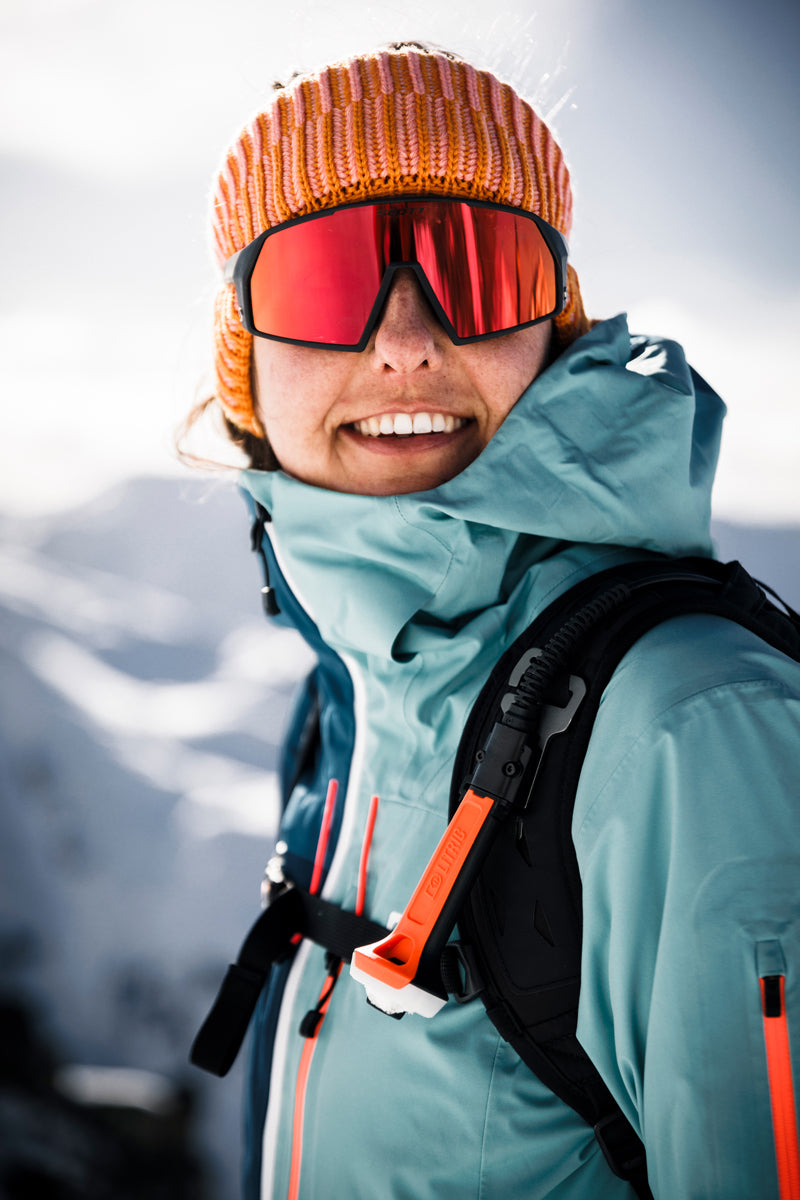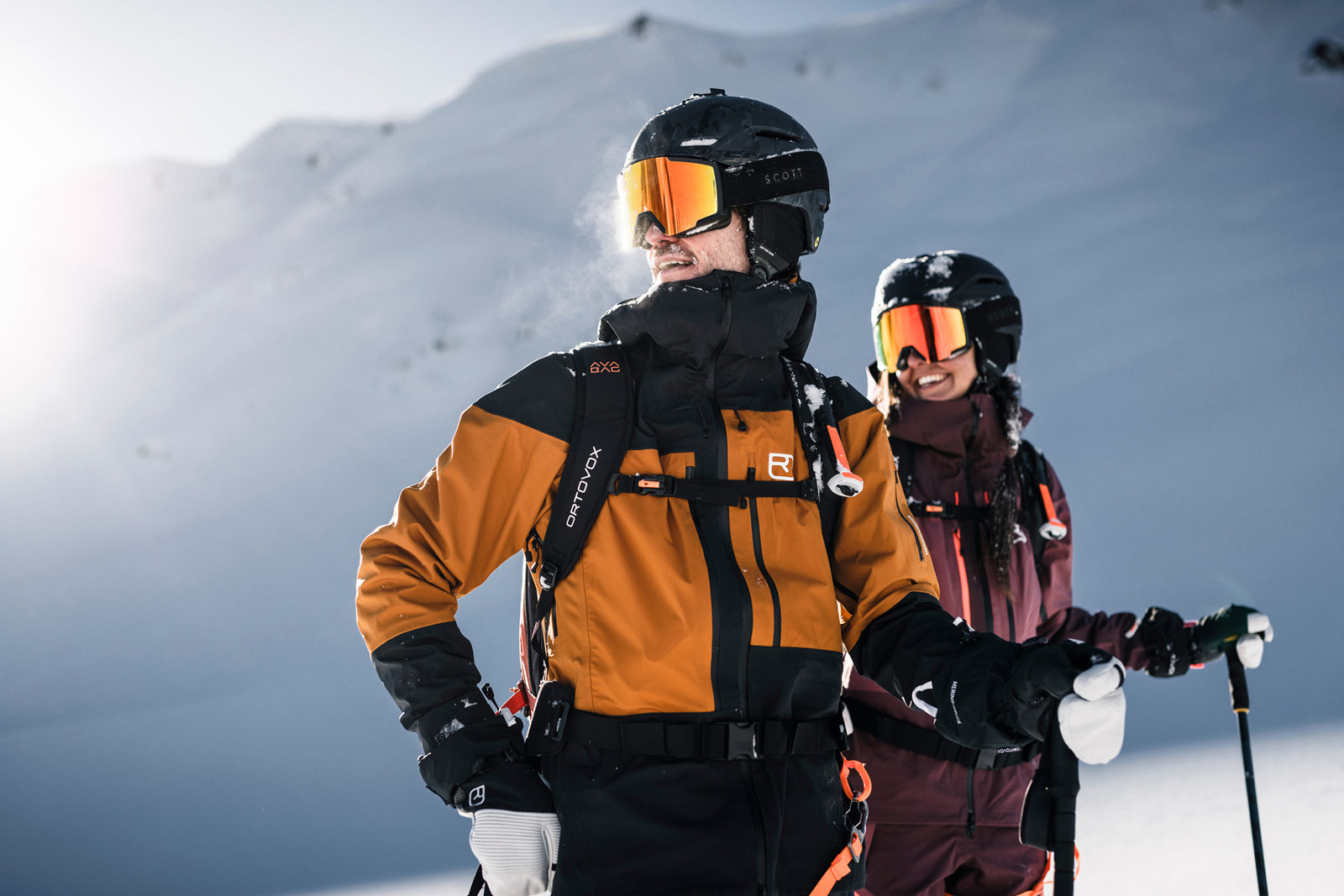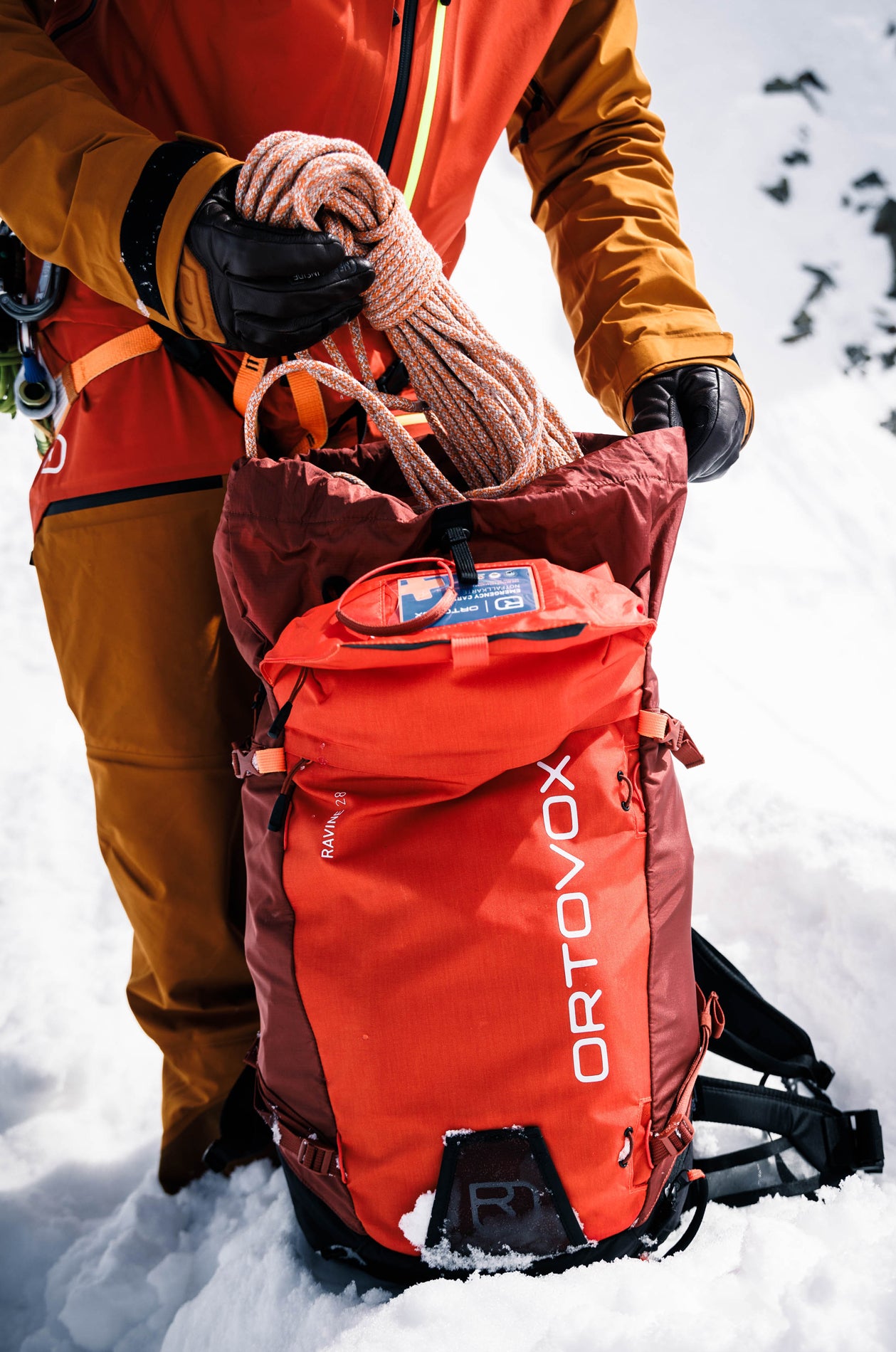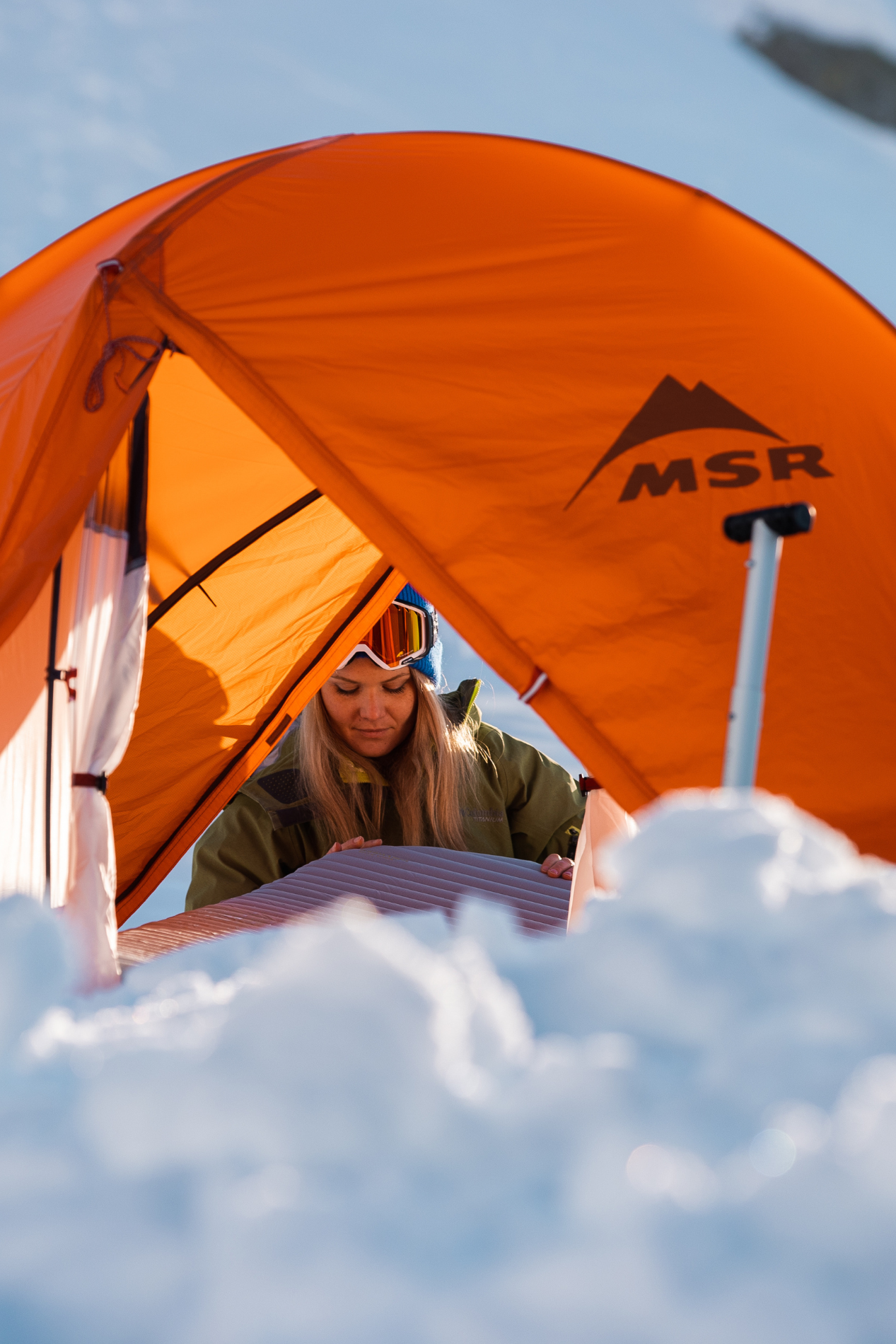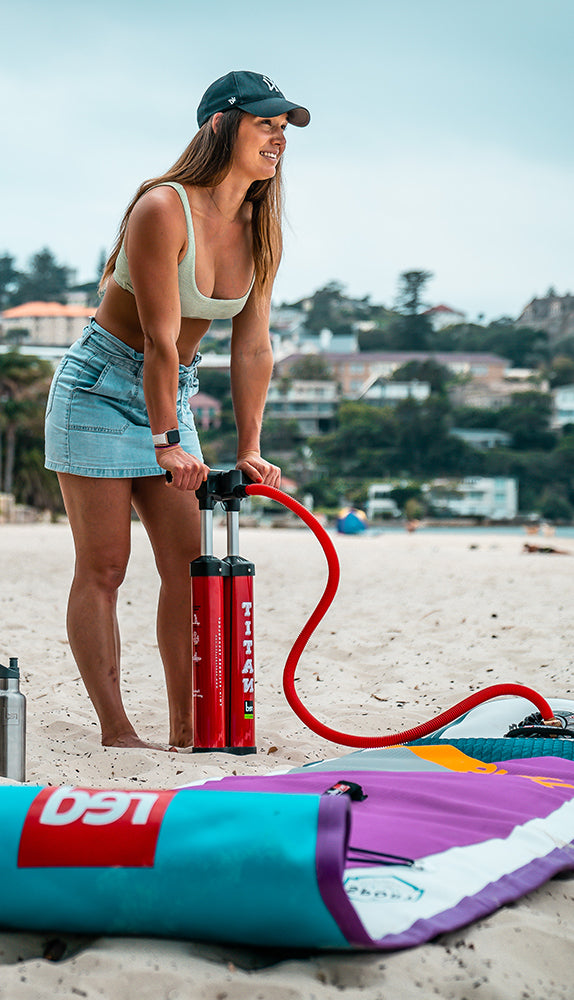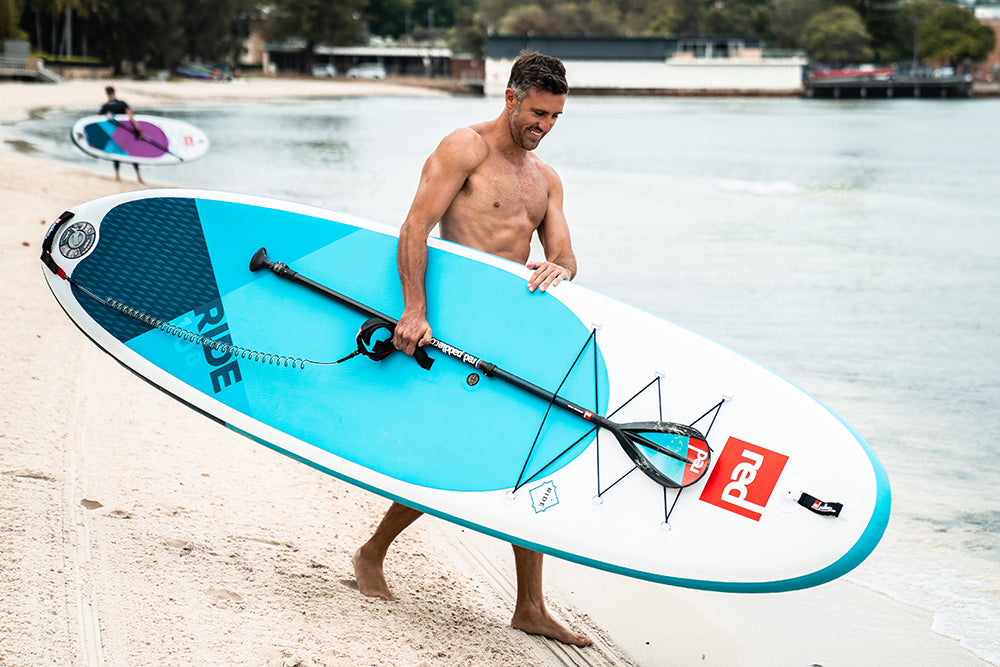1. Shoes

Arc’teryx Norvan LD GTX
Proper foot attire is absolutely essential to enjoy long trail runs this Fall. If your feet are unhappy, there’s a good chance trail running simply won’t be tolerable. With the varying terrain in the Sea to Sky Corridor, and weather to match, it’s best to have a shoe that’s not only comfortable, but up for whatever is thrown at it. Breathable, great traction on dry or wet, and lightweight are some key factors to look for when getting a trail running shoe. While you need to try on shoes to make sure they fit your foot properly, we highly recommend the Norvan LD GTX. It meets all our criteria and more, made to scramble over rock, keep your feed dry with a GORTEX membrane, and added support with the taller collar.
2. Hydration Vest

Salomon Agile 6
Going out for longer trail runs in more remote areas means you need to make sure you’re self-sufficient. There won’t be aid stations, a gas station, or your house close by to fill up on water. Wearing a proper hydration pack ensures you have the water you need, along with other essentials, and keeps your hands free to scramble up technical sections. We love the Salomon Agile 6 to carry all your water, purification tablets (for backup), snacks, and a water resistant jacket. This will be your new best friend.
3. Outerwear

Norvan SL Hoody
Autumn brings a mixture of all sorts of weather. From warm and sunny days, to almost winter like weather in the Alpine. Whether you’re running in the Valley or the alpine, you’ll want to pack a waterproof jacket in your pack. Staying dry is essential on longer missions that are away from all the comforts of home. The key is for your jacket to not only be waterproof, but also breathable, light, and easy to pack down. The Norvan SL Hoody is the lightest weight GORTEX jacket out there, and is made for high output trail running. It’ll keep you dry in the rainiest conditions, but not add bulk to your bag when it’s packed away.
4. Sun Protection

Black Diamond Free Range Cap
Just because it’s Fall doesn’t mean it’s time to skip on the sun protection. Running through the high alpine might mean some serious rays hitting your skin, so don’t forget to use sunscreen on exposed skin. Outside of sunscreen, one of the best recommendations we can offer is grabbing a hat. Keeping the sun off your face will keep you from getting burnt and keep your face muscles relaxed. A relaxed disposition on the trail means a decreased chance of tension headaches from squinting in the sun. A hat will also come in handy to shed water off your face if it happens to rain. We love the Black Diamond Free Range hat due to its lightweight materials and breathability.
5. Socks

Icebreaker Run
Unless your feet are like cows hide, it’s crucial to have a nice pair of moisture wicking socks. Quality trail running shoes become almost moot if you get blisters from cotton or ill fitting socks. It’s key to wear socks with moisture wicking properties, whether they are made of synthetic materials, wool, or a combination. If you fancy lower-cut socks, the icebreakers run-ultralight are a great with their low profile design, strategic support, and seamless toe box to help ward off blisters.
6. Gloves

Black Diamond MidWeight GridTech
When running, your hands typically warm up pretty quickly, but depending on the weather and the elements coming your way, it’s wise to pack gloves just in case. You’ll keep your hands protected while scrambling up rocks, all while keeping you nice and warm. We love a do-it-all glove with grip, touch screen capabilities, and that doubles as a liner for winter skiing. The Black Diamond MidWeight GridTech ticks off all the boxes.
7. Clothing

Icebreakers Amplify Crew
You’ll want to make sure you’re wearing synthetic, breathable running clothes. Now isn’t the time to look rad and wear your dad’s vintage 1970s National Park shirt, save that for the apres. For the run, we recommend wearing a technical shirt and shorts (or tights, depending on the weather) designed for high sweat output. Your shirt doesn’t have to be skin tight, but make sure it’s close enough to your skin to actually wick moisture away from your skin. The synthetic and natural fibers (if you go with Icebreakers) won’t be able to do their job if the fabric is too far away from your skin. For tops, we love the Icebreaker Amplify Crew, made out of merino wool, tencel and cool-lite to optimize breathability and comfort.
8. Headlamp

Petzl Bindi
With the days growing shorter in the Fall, it’s important to always carry a headlamp in case of an emergency when trail running. Your emergency might just be lingering longer at an alpine lake taking photos, but whatever the reason is, sometimes off the grid trail runs simply take longer than expected. For running, a lightweight and simple headlamp is optimal for comfort. Everything you need, and nothing you don’t. We love the Petzl Bindi for these very reasons.
9. Emergency Gear

Let’s be honest. We all want to shave precious ounces off our packs. The way to do this is buying lightweight gear from the outset, not by leaving your emergency gear at home. A simple emergency blanket, which weighs next to nothing, can be what keeps you from hypothermia if things go south on your run.
While it’s nice to be off the grid on your run, take a cell phone and put it on airplane mode while you’re out. No incoming calls, so no distractions, but you’ll have a line of communication if you need to get in touch with someone in case of an emergency. If you’re venturing way out and don’t have cell service, we recommend looking into the Garmin InReach system to keep you connected in case of an emergency.
We hope this inspires you to get out there and make the most of the last months before winter settles in. If you have more questions of how to prep for all you trail running adventures in the Sea to Sky, you can visit our local experts in any of our locations in Squamish or Whistler.


